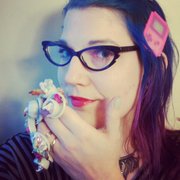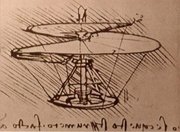We live in a world where kids who can't sit still in class are labeled troublemakers or low-performers or even ADD. But maybe they're just kinesthetic learners: that is, they need to move around in order to soak up the information.
Or, maybe they make a game out of different colored pens and markers and stickies; what the notebook looks like might really matter to a visual learner.
What about you? How do you actually get work done the best? When is it easiest to completely focus, to get in the zone or that magical "flow" that Mihaly Csikszentmihalyi advises us all to aspire for? Do you write best in a big chair instead of at your desk? Do you snack when you work? When are your most productive times of the day or night?
The bottom line is that people learn and create differently. In her, well, brilliant book "Brilliance by Design: Creating Learning Experiences That Connect, Inspire and Engage" (Berrett-Koehler Publishers, 2011, $18.95), Vicki Halsey of Ken Blanchard Companies offers a packed toolbox of ways to inspire yourself, your staff, your kids and your students to higher levels of creativity and success.
I read this book last year and, for the first time, fully understood that I am largely a visual learner and creator; I also figured out that at this point in my life, I am the most focused early in the day (a shocker for this long-time night person).
Take an online test to figure out your learning preferences (learningstyles.net). More importantly, have your staff take the quiz, and be sure to include options for as many learning styles as you can in classes you teach and meetings you run.
I was already using a lot of these tricks in my writing/creativity classes; now I use them even more. And it's fun.
Tools for Learning Styles
- Intrapersonal: Have participants journal or free-write their thoughts.
- Interpersonal: Be sure to include lots of social activity and sharing among participants.
- Verbal: Have fun with words and explore their origins and meanings.
- Naturalist: Have plants, rocks, shells or nature scenes in the room. Or meet outside.
- Visual/Spatial: Use lots of images and color. Have art on the walls and baskets of markers and stickies. Use mind maps (see page 21).
- Logical/mathematical: Use graphs; play logic games; do mathematical puzzles.
- Kinesthetic: Invite participants to touch and manipulate items, move around, put stickers on flow charts; shift from pairs to larger groups.
- Musical/Rhythmic: Play or teach to music; have them make up songs, raps, poems.
- Existential: Use Socratic questioning to make them think and consider different solutions.
Play at Work
Creative businesses are more innovative, and employees are more engaged and loyal. Work can feel like play, and it should to get employees happy and engaged.
Edward Hallowell, a Harvard psychiatrist and ADD expert, includes play in a list of vital management steps in his book "Shine: Using Brain Science to Get the Best from Your People" (Harvard Business Review Press, 2011, $26.95). That is, good managers must engage employees in "any activity that engages the mind." Yes, that can mean having a dart board or Nerf ball hoop; it also means holding interactive workshops where employees brainstorm creative ways to be make more money or market better. His tips include:
- Ask open-ended questions of employees.
- Model a questioning attitude and make it safe to disagree.
- Have goofy days at work. (We're planning a wearable art day at the JFP. Some already wear it (see photo).
- Create imaginative workspaces for "teaming."
- Have them do automatic writing without stopping.
- Send employees out of the office to think. Only rule: no email or texting.
- Have child- (and pet-) friendly offices.
- Have them set goals, then work backward to figure out actions to get to make goals happen.
- Reward creativity and new ideas.
TIP: Watch Mihaly Csikszentmihalyi's TED Talk on achieving flow. In his seminal book, "Flow: The Psychology of Optimal Experience" (Harper Perennial, 1990, $14.95), he advises four steps to being "autotelic"—able to achieve flow (complete attention) in whatever you're doing:
- Set goals, and then make choices to meet them.
- Become fully and deeply immersed in each activity, even if it's just washing paintbrushes or sharpening pencils.
- Paul full attention to what is happening.
- Learn to enjoy immediate experiences. This means creating a space for "stretch" activities, taking risks, growing.
NO more boring conference rooms! Turn your meeting rooms into inspiring playrooms for adults. Have lots of white boards, colorful markers, clay, games, sketchpads, an Etch-a-Sketch, crayons and a Slinky or two.
PLAY TIP: Open each meeting with a brain teaser; then give a prize to the one, or team, that gets it right. Dr. Hallowell likes "The Monty Hall problem: You are playing "Let's Make a Deal." Once the first "wrong" choice is revealed, does it benefit you to switch doors? The answer might surprise you; look it up in Wikipedia to learn more.
Get Whacked!
In his fabulous book, "A Whack on the Side of the Head: How You Can Be More Creative" (25th Anniversary Edition, Business Plus, 2008, $16.99), Roger von Oech says every successful creative must play four major roles with your creative efforts:
- Explorer
- Artist
- Judge
- Warrior
Actions you must take:
- Take a whack at it.
- Have a passionate lion in your heart.
- Get support.
- Get rid of excuses.
- Flex your "risk muscle."
- Have something at stake.
- Be dissatisfied.
- Have a thick skin. Some people won't like it. So what?
- Sell, sell, sell. Put it into the world.
REMEMBER:
It's not creative if it's hidden in a closet (or your head) and no one can experience it.
Set deadlines for key actions.
Be persistent and see them through.
Curiosita
Leonardo da Vinci might have been the most creative person in history. He wrote, painted, invented, created jokes and puzzles, and challenged his brain constantly, as the 7,000 pages of his illustrated notebooks show. The concept of curiosita was a mainstay in his creative arsenal.
"Great minds ask great questions," writes Michael J. Gelb in "How to Think Like Leonardo da Vinci: Seven Steps to Genius Every Day" (Delacorte Press, 1998, $17). Da Vinci constantly asked questions—how do birds fly?—and then used his ponderings to feed his creative output. Gelb suggests this curiosita self-assessment; the more boxes you check, the stronger your curiosita.
- I keep a journal or notebook.
- I take time for contemplation and reflection.
- I'm always learning something new.
- I seek out other perspectives before decisions.
- I am a voracious reader.
- I learn from children.
- Friends say I'm open-minded and curious.
- I'm skilled at identifying and solving problems.
- I always look up unknown words and phrases.
- I seek out information on other cultures.
- I know or am learning another language.
- I solicit feedback from others.
- I love learning.
More like this story
More stories by this author
- EDITOR'S NOTE: 19 Years of Love, Hope, Miss S, Dr. S and Never, Ever Giving Up
- EDITOR'S NOTE: Systemic Racism Created Jackson’s Violence; More Policing Cannot Stop It
- Rest in Peace, Ronni Mott: Your Journalism Saved Lives. This I Know.
- EDITOR'S NOTE: Rest Well, Gov. Winter. We Will Keep Your Fire Burning.
- EDITOR'S NOTE: Truth and Journalism on the Front Lines of COVID-19





Comments
Use the comment form below to begin a discussion about this content.